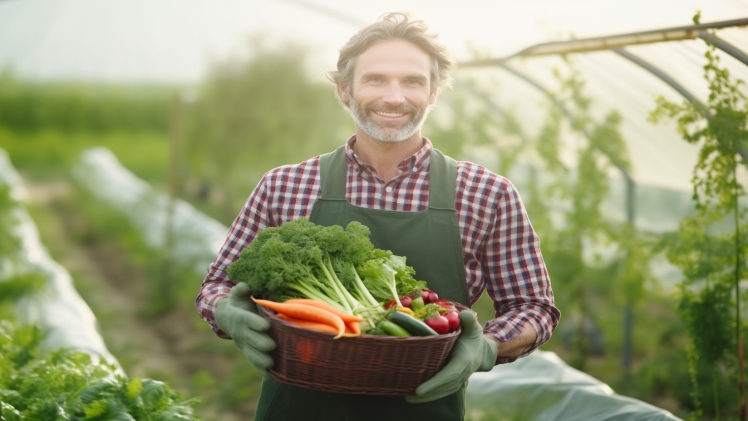The world has always relied on the bounties of nature to feed its inhabitants. Fruit trees and berry bushes have been a staple in human diets for millennia. With the global population expanding, the pressure to increase yield, while managing resources efficiently, has never been higher. The key to meeting this challenge lies in leveraging technology.
The Importance of Modern Technologies in Maintenance
In the era of rapid technological advancements, agriculture shouldn’t be left behind. Today’s farms are not just about manpower and traditional methods; they are about integrating modern science and technology to enhance output and sustainability. Fruit trees and berry bushes, given their delicate nature and the precision required in their maintenance, can particularly benefit from these advancements.
The use of these technologies doesn’t just boost productivity. It ensures healthier trees and bushes, guarantees better fruit quality, and is often more environmentally friendly than traditional methods. It’s about adopting practices that are both economically viable and ecologically sustainable. https://grower-yurovskiy-kirill.co.uk/ is also actively developing and applying such technologies in agriculture.
Advancements in Pruning and Training Techniques
Pruning and training are essential components in the care of fruit trees and berry bushes. Proper pruning not only shapes the tree or bush but also ensures maximum yield by optimizing sunlight exposure and reducing disease incidence.
New technologies have emerged that make these tasks more efficient. For instance, there are tools which provide precision cuts, ensuring minimal damage to the plant. Drones fitted with cameras can help in monitoring large orchards, providing insights on where and how much to prune.
Moreover, digital training guides, powered by augmented reality, can assist farmers in learning the best techniques tailored for specific fruit trees or berry bushes. These guides can offer real-time feedback, ensuring that even the most inexperienced hands can perform maintenance like a seasoned expert.
Innovative Soil and Nutrient Management
The foundation of any successful orchard or berry patch is the quality of its soil. Maintaining and enhancing soil health ensures the longevity and productivity of these fruit-bearing plants. And here, technology plays a transformative role.
Soil sensors, which are now more affordable and precise than ever, can measure various soil parameters, from moisture levels to nutrient content. These real-time data points allow farmers to understand the exact needs of their soil, preventing over-fertilization or under-watering.
Furthermore, innovations in composting and soil regeneration techniques have emerged, backed by science. For instance, biochar, a form of charcoal used in soil amendment, has shown significant potential in enhancing soil fertility, water retention, and overall plant health.
Automated Watering and Irrigation Systems
Water is the elixir of life, and nowhere is this truer than in agriculture. With changing climate patterns and unpredictable rainfall, managing water resources becomes paramount for the success of any orchard or berry farm.
Automated watering systems, powered by advanced sensors and algorithms, can ensure that trees and bushes receive just the right amount of water. These systems take into account various factors like soil moisture, weather predictions, and plant health to optimize irrigation. Such precision not only saves water but also ensures that the plants are neither over-watered nor under-watered.
Furthermore, the use of technology in designing irrigation systems has seen the rise of techniques like drip irrigation, which reduces water wastage by delivering it directly to the roots. Such methods, while conserving water, also prevent the proliferation of weeds and diseases that thrive in overly wet conditions.
Integrated Pest Management (IPM) and Biological Controls
Pests have always been a significant concern for those cultivating fruit trees and berry bushes. However, the over-reliance on chemical pesticides not only affects the quality of the fruits but also has broader ecological repercussions. Integrated Pest Management (IPM) offers a balanced and sustainable approach. By combining biological controls, such as beneficial insects, with monitored pesticide use, IPM delivers a dual benefit: healthy fruits and minimal environmental impact.
One example is the introduction of predatory insects like ladybugs to manage aphids. These natural predators can keep pest populations in check without the need for chemicals. Additionally, techniques like pheromone trapping can help in monitoring and controlling pest populations without harming non-target species.
Smart Monitoring: Using Sensors and Drones
The advent of smart monitoring tools has radically changed how orchards and berry farms are managed. Sensors, strategically placed, can provide real-time data on plant health, soil conditions, and even early signs of disease or pest infestations. This immediate feedback allows for quick interventions, reducing potential damage.
Drones, on the other hand, give a bird’s eye view of large orchards and berry fields. They can capture high-resolution images that, when processed using advanced algorithms, can provide insights on plant health, growth patterns, and areas that require attention.
Digital Tools and Apps for Garden Management
In the digital age, the power of information is at one’s fingertips. Numerous apps and digital tools have emerged, catering to both commercial farmers and home gardeners. These apps offer features like scheduling maintenance activities, tracking growth, and even connecting with experts for advice.
Furthermore, with the integration of AI, these apps can offer predictive insights, suggesting best practices tailored to specific types of fruit trees or berry bushes. This not only simplifies garden management but also enhances the overall yield and quality of the produce.
Post-Harvest Care and Storage Technologies
Once fruits are harvested, the challenge shifts to preserving their freshness and quality. Advances in post-harvest technologies ensure that fruits retain their nutritional value, flavor, and appearance for extended periods.
Controlled atmosphere storage, for example, adjusts the levels of oxygen and carbon dioxide to slow down the ripening process. Moreover, innovations in packaging, using biodegradable and eco-friendly materials, ensure longer shelf life without adding to the planet’s plastic burden.
Conclusion
As the global demand for fresh fruits and berries continues to rise, the amalgamation of traditional cultivation methods with cutting-edge technology becomes inevitable. These technological advancements, from smart monitoring to sustainable pest management, signify a promising future for fruit and berry cultivation.
The journey of fruit cultivation has evolved from relying solely on the whims of nature to harnessing technology for precision and efficiency. By adopting and investing in these technologies, the world ensures not only a bountiful harvest but also a sustainable and eco-friendly approach to agriculture. In the end, it’s about nurturing nature, the very source that feeds and sustains humanity.

